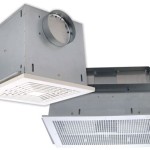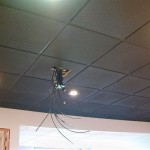Can I Put Wallpaper on My Ceiling?
Wallpapering ceilings is a popular interior design trend that can add style and visual interest to a room. While it's a relatively simple project that can be completed by DIY enthusiasts, there are a few essential aspects to consider before you get started.
1. Ceiling Preparation
The key to successful wallpaper adhesion is proper ceiling preparation. Start by thoroughly cleaning the ceiling to remove any dust, dirt, or grease. Use a degreaser or TSP (trisodium phosphate) for heavily soiled areas. Next, inspect the ceiling for any imperfections such as dents, cracks, or nail holes. Fill any gaps with spackling paste and allow it to dry completely. Finally, prime the ceiling with a high-quality primer that is compatible with the wallpaper you have chosen.
2. Wallpaper Selection
Choosing the right wallpaper for your ceiling is crucial. Look for wallpapers designed specifically for ceilings, as they are typically less prone to sagging and have a higher resistance to gravity. Consider the pattern, texture, and color of the wallpaper and how it will complement the overall design of the room. You may also want to take into account the natural light in the room and how it will affect the appearance of the wallpaper.
3. Wallpaper Adhesive
The type of wallpaper adhesive you use will depend on the weight and material of the wallpaper. For lightweight wallpapers, a premixed adhesive is usually sufficient. Heavier wallpapers, such as vinyl or flock, may require a stronger adhesive or a paste that needs to be mixed with water. Follow the manufacturer's instructions carefully when preparing and applying the adhesive.
4. Wallpaper Installation
Start by measuring and cutting the wallpaper to the appropriate length. Apply a generous amount of adhesive to the back of the wallpaper and fold over the edges slightly. Starting in the center of the ceiling, carefully align the wallpaper and press it into place. Use a smoothing tool to remove any air bubbles or wrinkles. Continue installing the wallpaper, matching the pattern and overlapping the edges as needed. Allow the wallpaper to dry completely before trimming any excess.
5. Touch-ups and Finishing
Once the wallpaper is dry, inspect it carefully for any imperfections. Touch up any areas where the adhesive is visible or the seams are not aligned properly. Use a damp sponge to wipe away any excess adhesive or wallpaper paste. Finally, apply a protective topcoat to the wallpaper to enhance its durability and prevent fading or staining.
Conclusion
Wallpapering a ceiling can transform a room with minimal effort and expense. By carefully considering the ceiling preparation, wallpaper selection, and installation process, you can achieve a stunning finish that will enhance the aesthetics of your home for years to come.

How To Hang Wallpaper On A Ceiling Design Asylum Blog By Kellie Smith

How To Wallpaper A Ceiling Complete Tutorial

4 Steps To Prepare Hang Wallpaper On A Ceiling Paintpourri

Pin Page

L And Stick Wallpaper On Textured Walls Kate Lecerf Interiors

Camper Ceiling Renovation Adding Wallpaper To My 1987 Pop Up

My Best Tips To Wallpaper The Ceiling Step By Guide

How To Wallpaper Or Paint Angled Walls And Sloped Ceilings

Wallpaper On Polly S Ceiling Chris Loves Julia

Design Inspiration Wallpapered Ceilings Tidbits Twine
Related Posts








